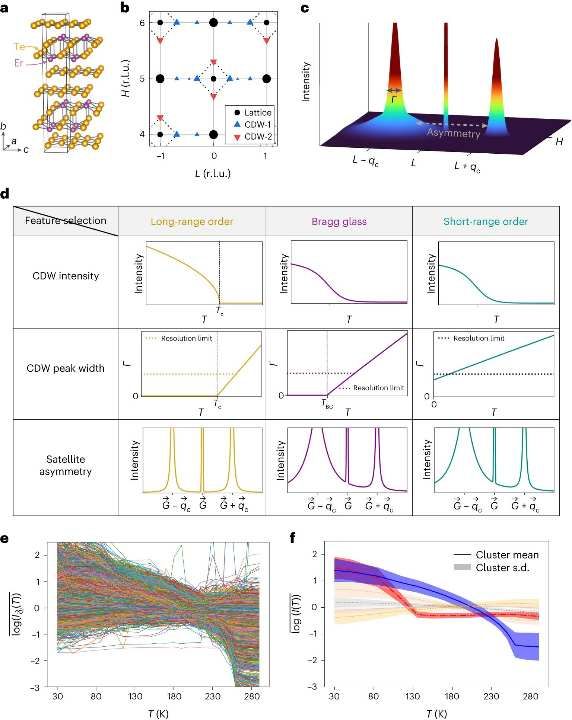Theoretical Phase of Matter Confirmed to Be Real
Scientists from the Cornell University were able to discover the elusive Bragg glass phase through the help of X-ray analysis and a machine learning algorithm. This scientific finding answers a fundamental question about the realism of the Bragg glass phase in real materials as well.

The published research paper is titled “Bragg glass signatures in PdxErTe3 with X-ray diffraction Temperature Clustering (X-TEC)” and is published in Nature Physics. The lead author of the paper is Krishnanand Madhukar Mallayya, a postdoctoral researcher in the Department of Physics in the College of Arts and Sciences at Cornell University. Eun-Ah Kim, a professor of physics in Arts & Sciences, is the corresponding author. The study was carried out with the assistance of scientists from the Argonne National Laboratory and the Stanford University.
The researchers have provided strong evidence of the Bragg glass phase through using the X-ray scattering which enable characterization of whole volume of material excluding the surface. This was done in a systematically disordered CDW material called PdxErTe3. The team relied on extensive X-ray data and an advanced machine learning data technique known as X-ray Temperature Clustering (X-TEC).
Mallayya said, “Although the scientists theoretically predicted the existence of CDW Bragg glass three decades ago, there was no actual experiment that showed its presence in the bulk of the crystal. ”
Kim explained that there are three distinct phases: It includes long-range order or the Bragg glass and the disordered state. The CDW correlation decreases within a finite distance in the disordered state while in the long-range ordered state it extends to infinity.

Kim in the Glauber phase of the Bragg glass stated that the correlation of the CDW will be such that it will not fully die until the distances are infinite.
Kim emphasized this point by noting that it is often subtle to identify these differences from experimental data, which is still a problem manifested in realistic scenarios such as noise or finite resolution of the experimental process.
In essence, the researchers managed to navigate around or bypass some crucial stumbling blocks with the help of material, data, and, more specifically, machine-learning tools interconnected cooperation. In collaboration with a group of scientists from Stanford, they identified, for instance, a family of CDW materials called PdxErTe3 where dirt can be controlled in an experiment so that a systematic study can be conducted. An incredible volume of data was collected by the principal author at Argonne National Laboratory in partnership with Argonne scientists.
In terms of machine learning, certain analyses were performed with X-TEC, a machine learning tool, to tackle the huge amount of data using a big data architecture and integration.
Mallayya pointed out that the experimental observation of Bragg glass phase in CDW via XRD does answer an open question on what has happened to CDW order that has been rendered subject to dirt.
As Kim rightly stated, the paper develops a fresh form of research in the big data context by implementing state-of-the-art machine learning tools and data-scientific approaches to solve difficult problems and discover subtle signs by analyzing large datasets.
Here the researchers pointed out that the identification of Bragg glass order and the generation of the phase diagram greatly help our understanding of the correlation between disorder and fluctuations. Furthermore, the modulation of intensity fluctuations through a high-throughput measure of ‘peak spread’ may have profound implications in scattering experiments by selecting the state of the system appropriately by way of X-TEC.
Reference:Krishnanand Mallayya et al, Bragg glass signatures in PdxErTe3 with X-ray diffraction temperature clustering, Nature Physics (2024). DOI: 10.1038/s41567-023-02380-1
Do not forget to share your opinion with us to provide you with the best posts !




0 Comments